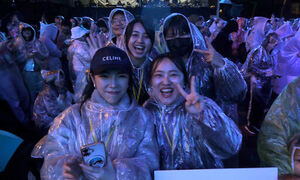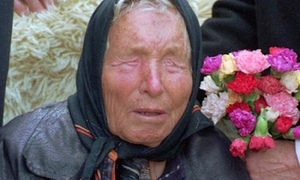These new weapons also expand Russian nuclear first- and second-strike options, strengthening Moscow’s strategic deterrent. They also provide Moscow with greater freedom of action internationally - which means only one thing: more trouble.
Of course, not only do these weapons diversify and deepen Russia’s military threats, they also signal Russia’s continuing commitment to the centrality of its nuclear forces in defense policy and its ongoing drive for military superiority.
Lastly, these novel strategic systems also enhance Russian President Vladimir Putin’s domestic political power by proving his continuing commitment to defending against (Kremlin-generated perceptions of) threats from the United States and NATO.
The 2018 Nuclear Posture Review reminds us that Russia retains large numbers of nonstrategic (i.e., “low-yield”) nuclear weapons, adopting military strategies that “rely on nuclear escalation for their success.”
The potential use of these battlefield nuclear weapons for regional war fighting is very troubling.
It’s unclear whether all or just some of these new Russian strategic weapons will ultimately be fielded - or be deployed in militarily significant numbers. For the moment, the new, nontraditional weapons mark a significant emphasis on nuclear weapons systems as central to Russia’s defense plans, doctrine, and policy.
These weapons also send unmistakable messages to Moscow’s competitors and potential foes. Message 1: Russia is - and will continue to be - a dynamic, advanced, and global military superpower.
Message 2: Mr. Putin’s Russia - with its bulging nuclear arsenal - isn’t in the mood to be messed with any time soon.
새로운 대대적 무력 경쟁 (2)
피터 브룩스(전 미 국방부 부차관보)
이런 신무기들은 또한 러시아 핵공격 1, 2차 타격의 선택 대안을 확대하고 모스크바의 전략적 억지력을 강화한다. 또한 이런 무기들은 모스크바가 국제적으로 행동하는 자유를 확장해 주는데, 이는 오로지 골칫거리 하나가 추가되는 것을 의미한다.
물론 이런 무기들은 러시아의 각종 군사위협을 다변화하고 심화할 뿐 아니라, 러시아가 국방정책과 군사적 우위를 위해 진행 중인 노력에서 핵무력의 중심적 역할 유지에 계속 전념하겠다는 신호기도 하다.
끝으로 이런 일련의 새로운 전략체계는 블라디미르 푸틴 러시아 대통령이 미국 및 나토(북대서양조약기구)의 위협(크레믈궁이 만들어 낸 인식)을 막아 내겠다는 지속적인 공약을 입증함으로써 그의 국내 정치권력도 향상시킨다.
2018년 핵태세 검토 보고서(NPR)는 러시아가 “자기네 성공을 위해서 핵 확전에 의존하는” 군사전략을 채택한 가운데 비전략적(즉 “저위력”) 핵무기를 다수 보유하고 있다는 사실을 우리에게 상기시켜 준다.
국지적인 전쟁의 전투용으로 이런 전장핵무기의 잠재적 사용은 대단히 큰 우려를 불러일으킨다.
러시아의 이런 새로운 전략무기들이 궁극적으로 전부 실전 배치될 것인지, 아니면 단지 일부만 배치될 것인지, 혹은 군사적으로 의미 있는 수량으로 배치될 것인지 여부는 불분명하다. 당분간 이 새로운 비재래식 무기들은, 러시아의 국방 계획과 원칙 및 정책에서 핵무기 체계가 중심을 차지한다는 점을 의미심장하게 보여 준다.
이런 무기들은 또한 모스크바의 경쟁 국가들과 잠재적인 적국들에 틀림없는 메시지를 보낸다. 첫 번째 메시지. 러시아는 역동적이고 세계적인 선진 군사 초강대국이며 앞으로도 계속 그럴 것이다.
두 번째 메시지. 급증하는 핵무기를 보유한 푸틴의 러시아는 가까운 장래에 어떠한 방해도 받지 않으려 할 것이다.
역주=오성환 외신전문위원 suhwo@segye.com
Copyright ⓒ 세계일보. 무단 전재 및 재배포 금지
![[설왕설래] 베네수엘라 석유의 저주](http://img.segye.com/content/image/2026/01/05/128/20260105517351.jpg
)
![[채희창칼럼] 국가 수사 역량이 떨어지면](http://img.segye.com/content/image/2026/01/05/128/20260105517337.jpg
)
![[기자가만난세상] 세계가 알아듣기 시작한 한국어](http://img.segye.com/content/image/2026/01/05/128/20260105517255.jpg
)
![[기고] ‘진짜 자치’로 가는 길, ‘재정분권’에서 시작된다](http://img.segye.com/content/image/2026/01/05/128/20260105517083.jpg
)








